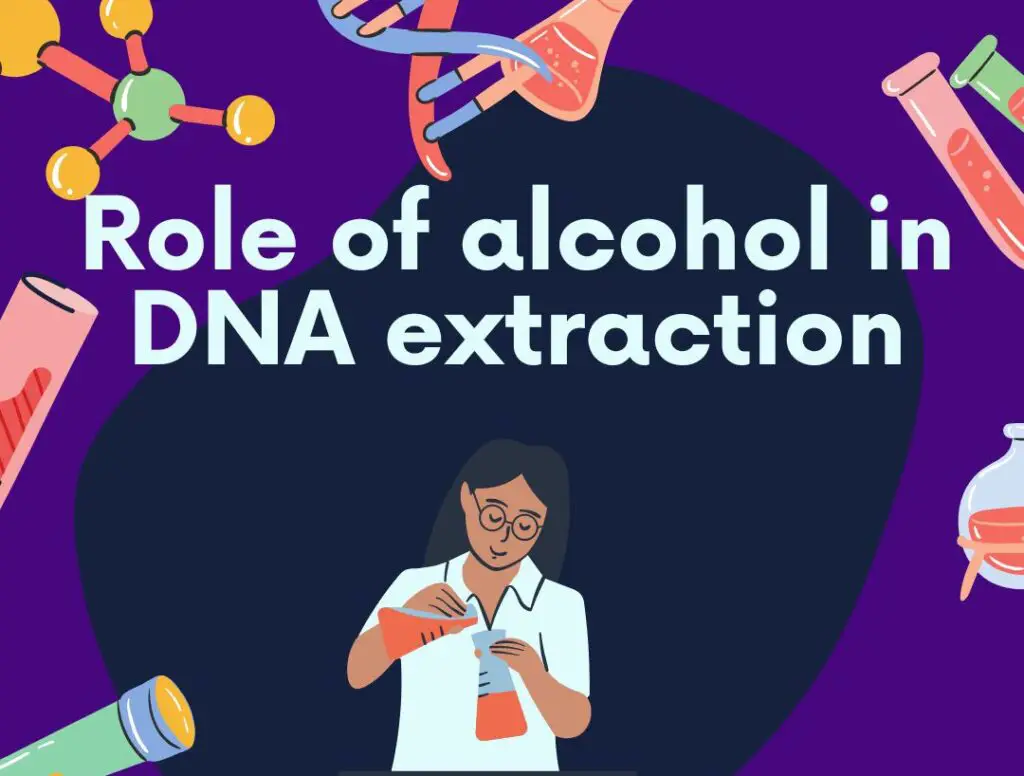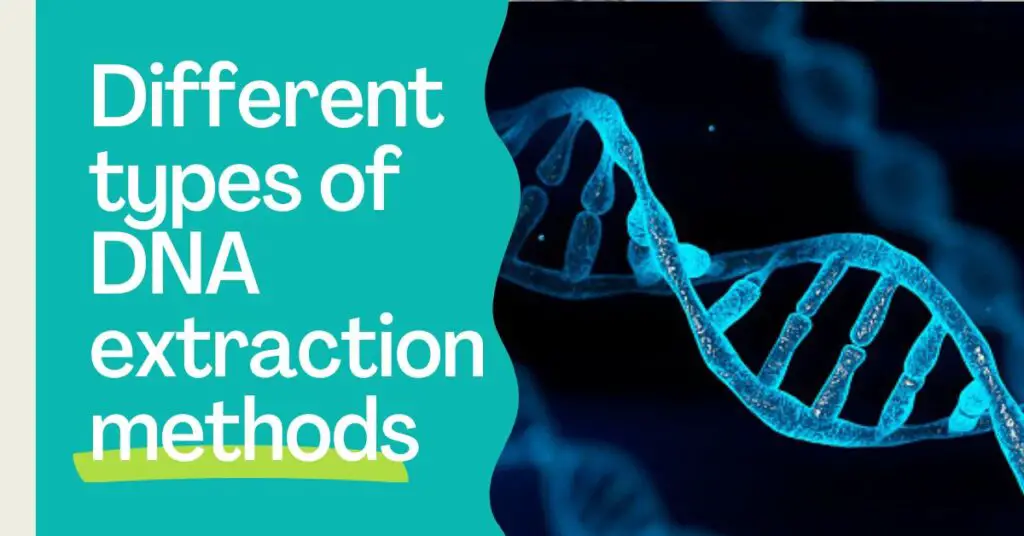“Detergents play a crucial role in any DNA extraction scheme and thus have pivotal importance. This article focuses on the role and types of detergents used in DNA extraction.”
Do you know the success of any molecular biology experiment including PCR, DNA sequencing or microarray depends on which factor? The answer is ‘DNA extraction.’ The quality of DNA depends on how effectively you isolate the DNA.
The goal of DNA extraction is to obtain high-quality and high-yield DNA. Any good molecular biology experiment or DNA test requires DNA with a purity of 1.80 and a quantity of at least 100nG. Thus DNA isolation (or extraction) is a crucial step in the study of genetic material, DNA tests and genetic experiments.
DNA extraction is a process of isolating DNA from a cell by cell disruption, DNA separation and DNA purification. Any successful DNA isolation requires effective cell lysis and subsequent isolation of DNA.
Common methods for cell lysis are chemical, physical and enzymatic treatments. Detergents are common chemical agents used in cell lysis which is a process to disrupt a cell wall/ membrane.
In addition, detergents play a significant role in solubilizing biomolecules and nucleic acid separation. In this article, I will explain the importance and role of detergents in DNA extraction. I will also list some of the common detergents used in various DNA extraction modules.
I’m a trained geneticist and years of experience in nucleic acid isolation and related techniques. So I will cover all the technical aspects that will help you to strengthen your DNA isolation scheme. Lastly, I will give you a comparative analysis as well as a guide to choosing the detergent for your DNA extraction experiment.
Stay tuned.
Key Topics:
What is Detergents is DNA extraction?
Detergents in DNA extraction are surfactants or surface-acting agents that can release surface tension between two substances. Structurally, detergents usually contain a hydrophilic head group and a hydrophobic tail. The head contains a charged group while the tail contains any hydrocarbons.
Thus, detergents are known as amphipathic molecules. In DNA extraction, detergents help to isolate pure DNA by performing various functions. Common detergents used in DNA extraction are anionic detergents, cationic detergents, non-ionic detergents and zwitterionic detergents.
Read further: How to Choose the Right DNA Extraction Method?- A beginner’s guide.
What is the role of detergents in DNA extraction?
Detergents are mainly used in the cell lysis step. Some of the crucial functions are listed here:
Cell lysis:
The major function of any detergent is cell lysis. They break or disrupt the lipid bilayer of the cell wall or membrane by solubilizing lipids and proteins. Disruption of the bilayer structure allows direct access to the cellular components.
Protein denaturation:
Proteins are predominantly present in a cell as a constituent of a cellular membrane and cellular machinery. Detergents solubilize and denature proteins and prevent protein-DNA interactions. This is very crucial to improve the yield and purity of DNA.
Lipid solubilization:
Lipids can easily co-precipitate with the DNA and thus must be removed first. Lipids are major constituents of the cell wall or membrane. Detergents, much like proteins, solubilize lipids as well. Lipid solubilization is also crucial for good-quality DNA.
Nuclease inhibition:
Nucleases are a class of enzymes that degrade cellular DNA. As enzymes are also one type of protein, they can also be denatured by detergent treatment. Eventually, detergents inactivate nucleases, prevent the DNA from degradation and improve the yield of DNA.
Removal of cellular debris:
Detergents solubilize the protein and lipid components of the cell and thus remove all the debris from the nucleic acid.
In conclusion, functions that detergents perform are cell lysis, protein and lipid solubilization, protection from DNA degradation and stabilizing the DNA.
Read more: Is Manual DNA Extraction Still Relevant in 2023?
How do detergents work in DNA extraction?
Now to get more clarity on this topic, let’s see the working mechanism or the principle behind detergent-mediated cell lysis.
Detergents are chemicals that effectively perform cell lysis by disrupting a cell membrane. A cell membrane is usually made up of phospholipids and proteins. The head of a phospholipid faces the outer environment while the tail forms the interior of the membrane.
When the detergent attaches to the cell membrane, the head remains outside, while the hydrophobic tail is inserted into the membrane which eventually disrupts the structure of the cell membrane.
Using the same mechanism it also solubilizes the membrane protein and disrupts the cell membrane. This process is known as cell lysis which leads to the release of cellular content including DNA into the solution.
Noteworthy, the efficiency of cell lysis depends on detergent selection, cell type, and concentration of the detergent.
Types of Detergents for DNA Extraction:
Detergents for DNA extraction can be classified into cationic, anionic, non-ionic and zwitterionic detergents.
SDS: SDS is Sodium Dodecyl Sulfate. It is an anionic detergent and a strong cell lysis agent. SDS is widely used as a component of lysis buffer for phenol: chloroform: isoamyl alcohol technique.
It is commonly employed to lyse cells with a strong and rigid cell wall and thus is used for plant DNA extraction.
Nonidet P-40: Nonidet P-40 is a non-ionic detergent. It has mild to moderate lysis properties. Due to this reason, it is used for cell lysis with a smooth cell wall or membrane, for example– animal cells.
Note that NP-40 can also effectively solubilize the cytoplasmic proteins. Also, it does not interfere with downstream applications like PCR or DNA sequencing.
CTAB: CTAB is Cetyltrimethylammonium Bromide. It is a strong cationic detergent used in DNA extraction. It can effectively solubilize lipids, proteins and polysaccharides and hence, it is a main ingredient of a plant lysis buffer.
CTAB gives a high yield and high pure DNA and does not interfere with downstream processing.
Twin20: Twin20 is a non-ionic mild detergent. It is used to lyse cells with a smooth cell wall or membrane.
Triton X100: Triton X-100 is another non-ionic detergent commonly used for DNA extraction. It is a mild lysis agent and can not interfere with downstream applications. It is commonly used along with other detergents like SDS.
These are some of the common detergents we know! Used in DNA extraction, however, other detergents may also be used. The list of detergents and their properties is given in the table below.
| Detergent | Detergent Type | Lysis ability | Cell Types |
| SDS | Anionic | Strong | Plant and bacterial cells. |
| CTAB | Cationic | Strong | Plant cells |
| Nonidet P-40 | Non-ionic | Mild | Animal cells |
| Triton X-100 | Non-ionic | Mild | Animal cells |
| Tween20 | Non-ionic | Mild | Animal cells |
| Sarkosyl | Anionic | Moderate | – |
| Sodium deoxycholate | Anionic | Moderate | – |
| CHAPS ((3-[(3-Cholamidopropyl)dimethylammonio]-1-propanesulfonate)) | Zwitterionic | Mild | – |
Wrapping up:
Cell lysis is a crucial process in any DNA extraction scheme and thus, detergent selection for lysis is also important. Studies suggest that for some hard cells, like plant cells, the combination of physical lysis and detergent-based lysis gives a good yield.
It is also important to note that both cationic and anionic detergents can be used for the effective solubilization of all types of proteins and lipids. I hope this article will help you in your DNA extraction experiments.
If you would like to learn more regarding this topic, we have tons of articles on this website. And if you want to master these skills (DNA extraction) and two others, please enroll in our upcoming course.

